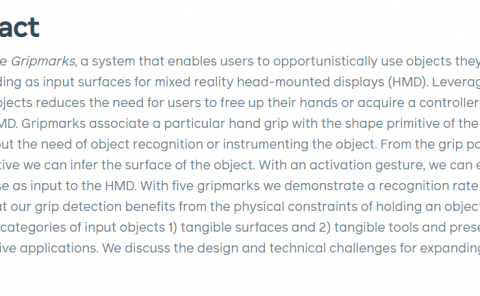On the Plausibility of Virtual Body Animation Features in Virtual Reality
PubDate: Aug 2019
Teams: IT University of Copenhagen;Artanim Foundation
Writers: Henrique Galvan Debarba, Sylvain Chague, Caecilia Charbonnier
PDF: On the Plausibility of Virtual Body Animation Features in Virtual Reality

Abstract
We present two experiments to assess the relative impact of different levels of body animation fidelity on plausibility illusion (Psi). The first experiment presents a virtual character that is not controlled by the user (n = 13), while the second experiment presents a user-controlled virtual avatar (n = 24, all male). Psi concerns how realistic and coherent the events in a virtual environment look and feel and is part of Slater’s proposition of two orthogonal components of presence in virtual reality (VR). In the experiments, the face, hands, upper and lower bodies of the character or self-avatar were manipulated to present different degrees of animation fidelity, such as no animation, procedural animation, and motion captured animation. Participants started the experiment experiencing the best animation configuration. Then, animation features were reduced to limit the amount of captured information made available to the system. Participants had to move from this basic animation configuration towards a more complete one, and declare when the avatar animation realism felt equivalent to the initial and most complete configuration, which could happen before all animation features were maxed out. Participants in the self-avatar experiment were also asked to rate how each animation feature affected their sense of control of the virtual body. We found that a virtual body with upper and lower body animated using eight tracked rigid bodies and inverse kinematics (IK) was often perceived as equivalent to a professional capture pipeline relying on 53 markers. Compared to what standard VR kits in the market are offering, i.e. a tracked headset and two hand controllers, we found that foot tracking, followed by mouth animation and finger tracking, were the features that added the most to the sense of control of a self-representing avatar. In addition, these features were often among the first to be improved in both experiments.



